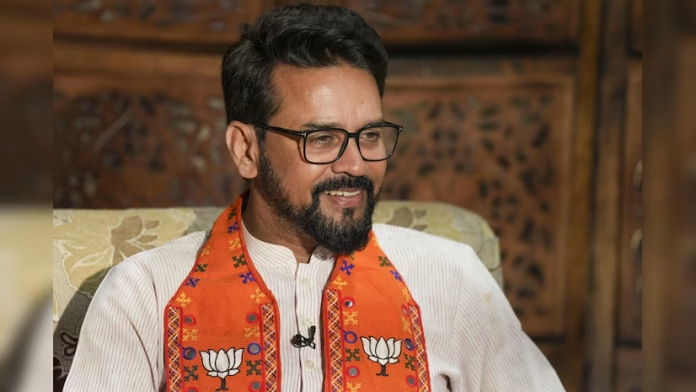In a spirited address during the seventh day of the Parliament’s Budget Session, Union Minister Anurag Thakur lauded the recently presented Union Budget, characterizing it as a “booster budget” designed to propel India’s economic growth. This assertion was made in direct response to opposition parties’ criticisms, which labeled the budget as a mere “band-aid for bullet wounds.”
In This Article:
Government’s Perspective: A Vision for a Developed India
Anurag Thakur emphasized that the Union Budget is a comprehensive blueprint aimed at fulfilling the aspirations of a “New India” by 2047. He highlighted significant allocations and initiatives, including:
- Capital Expenditure: A substantial increase in capital expenditure to ₹11.11 lakh crore, intended to strengthen infrastructure and stimulate employment opportunities.
- Railway Development: An unprecedented allocation of ₹2.4 lakh crore for the Indian Railways, marking a ninefold increase compared to the 2013-14 budget.
- Agricultural Support: Enhanced provisions for the Pradhan Mantri Awas Yojana and a ₹20 lakh crore allocation for the Kisan Credit scheme to support small and marginal farmers.
Thakur asserted that these measures are not temporary fixes but are designed to lay a strong foundation for a developed India. He stated, “This Budget focuses on the poor, women, laborers, middle class, youth, farmers, SC, ST, OBC, and every section of society.“
Opposition’s Critique: A Call for Paradigm Shift
Opposition leaders have expressed dissatisfaction with the budget, arguing that it fails to address the core economic challenges facing the nation. Congress leader Rahul Gandhi described the budget as offering a “band-aid for bullet wounds,” emphasizing the need for a paradigm shift to tackle issues such as stagnant real wages, lack of mass consumption, and sluggish private investment.
Mallikarjun Kharge, Congress President, criticized the budget for lacking a roadmap to double farmers’ income and for not providing concessions in GST rates on agricultural inputs. He accused the government of focusing on garnering praise while neglecting pressing issues like inflation and unemployment.
Union Budget – Key Highlights
- Infrastructure Investment: The budget proposes a 33% increase in capital expenditure, aiming to boost infrastructure development across the country.
- Tax Reforms: Introduction of significant income tax cuts for the middle class, with exemptions for individuals earning up to ₹7 lakh annually.
- Support for Farmers: A 66% increase in allocation for the Pradhan Mantri Awas Yojana and substantial funding for the Kisan Credit scheme to support small and marginal farmers.
- Youth and Skill Development: Initiatives to train millions of youth in emerging technologies such as AI and 3D printing, with the establishment of 30 Skill India International Centres.
A Balanced Perspective
While the government emphasizes the budget’s focus on inclusive growth and long-term development, the opposition contends that it falls short in addressing immediate economic challenges. The contrasting perspectives underscore the ongoing debate about the most effective strategies to foster sustainable economic growth and social equity in India.
As the Budget Session progresses, these discussions are expected to continue, reflecting the diverse viewpoints within India’s democratic framework.




